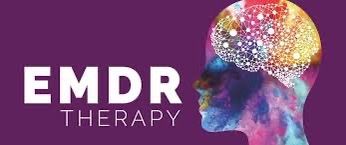HOW TO FIND A WEIGHT INCLUSIVE DIETITIAN
understanding our differences

Understanding Neurodiversity: Embracing Differences in the Human Brain
In recent years, the term "neurodiversity" has gained significant attention, particularly in discussions about mental health, education, and workplace inclusion. But what exactly is neurodiversity, and why is it important?
What is Neurodiversity?
Neurodiversity is the concept that differences in the human brain and its functioning are a natural and valuable part of human diversity. Just as we celebrate diversity in race, gender, and culture, neurodiversity encourages us to acknowledge and respect the different ways in which people think, learn, and experience the world.
The term was first coined in the late 1990s by sociologist Judy Singer, who sought to challenge the medical view that neurological differences like autism, ADHD, dyslexia, and other cognitive variations should be "cured" or "fixed." Instead, neurodiversity advocates argue that these differences should be embraced as unique ways of being.
Neurodiversity includes individuals who have cognitive variations that affect how they process information. Some of the most commonly discussed conditions include:
1. Autism Spectrum Disorder (ASD)
Individuals on the autism spectrum may experience differences in communication, social interaction, and sensory processing. The "spectrum" aspect highlights the wide variety of ways autism can manifest.
2. Attention Deficit Hyperactivity Disorder (ADHD): People with ADHD often struggle with attention regulation, impulsivity, and hyperactivity. However, they may also exhibit strengths in creativity, problem-solving, and enthusiasm.
3. Dyslexia: Dyslexia affects how individuals process written language, often making reading and writing challenging. Many people with dyslexia are highly creative and excel in visual and spatial reasoning.
4. Dyspraxia: Dyspraxia affects motor coordination, making tasks that require physical coordination more difficult. However, individuals with dyspraxia often have strong skills in other areas, such as verbal communication or creative thinking.
5. Tourette Syndrome: Characterized by involuntary movements or vocalizations known as tics, Tourette Syndrome can vary widely in intensity and presentation. Many individuals with Tourette’s have typical or above-average intelligence.
The neurodiversity movement challenges the idea that there is one "right" way for the brain to function. It emphasizes that people with different cognitive abilities bring unique perspectives and strengths to society. Here’s why it’s important to embrace neurodiversity:
1. Breaking Down Stigmas: Historically, individuals with neurological differences were often marginalized, misdiagnosed, or subjected to harsh treatments. By recognizing neurodiversity, we move toward a society where differences are accepted, and individuals are treated with dignity.
2. Educational Inclusion: Neurodiversity encourages a more inclusive education system where students with diverse learning needs are supported. It advocates for personalized learning approaches that accommodate different ways of processing information.
3. Workplace Innovation: Neurodiverse individuals often bring fresh, creative solutions to problems, thanks to their unique ways of thinking. Companies that value neurodiversity can benefit from enhanced creativity, innovation, and problem-solving capabilities.
4. Promoting Self-Acceptance: For individuals who are neurodiverse, understanding and accepting their cognitive differences can be empowering. It shifts the focus from trying to "fit in" to embracing who they are and recognizing their unique talents.
If we are to embrace neurodiversity fully, we must actively work to create inclusive environments in schools, workplaces, and communities. Here are some ways to support neurodiversity:
Education and Awareness: Raising awareness about neurodiversity and educating people on different neurological conditions helps break down misunderstandings and prejudices.
Accommodations: Whether in school or the workplace, providing reasonable accommodations—like flexible work hours, assistive technology, or sensory-friendly environments—can help neurodiverse individuals thrive.
Strength-Based Approaches: Rather than focusing on deficits, a strength-based approach emphasizes the unique skills and abilities of neurodiverse individuals.
Advocacy and Policy: Continued advocacy for policies that protect the rights of neurodiverse individuals is critical to ensuring equal access to education, employment, and healthcare.
Neurodiversity encourages us to see neurological differences not as deficits, but as part of the broad spectrum of human diversity. By fostering environments that embrace these differences, we can create a more inclusive, innovative, and compassionate society where everyone has the opportunity to reach their full potential.
Emergencies: If you are suicidal or having a mental health crisis, please all the crisis line at 9-8-8 or
604-872-3311 or https://crisiscentrechat.ca
If you cannot keep yourself safe, call 9-1-1 or go to your nearest emergency room department.
Address: 206 - 1651 Commercial Drive, Vancouver V5L 3Y3
Mail: Contact form / carmanahcounselling@gmail.com
Phone: 604-426-1185
Carmanah Counselling and Integrated Health
Co-located with:
www.hollifield.ca
www.ashleyshankarcounselling.com
www.cristinadann.com
www.stephaniethencounselling.com
www.empoweredpathcounselling.com






